There are Twenty-Three (23) Good companion plants for asparagus and Four (4) bad ones including a variety of herbs, fruits, vegetables and more.
Asparagus is a perennial crop that requires special care to grow. Unsurprisingly, this vegetable has been farmed for thousands of years, with its tasty and nutritious spears.
Companion plants for Asparagus cut across Fruits, vegetables, and the like; they may reach a height of 5 feet and a width of 5 feet, with delicate fern-like foliage that gives an exquisite touch to any garden or farm. Being a perennial, Asparagus needs more preparation and care than annuals, but the rewards may be well worth the effort.
The key to producing Asparagus is to give the proper growth conditions. Asparagus loves well-drained soil with lots of organic matter and full light to grow robust and healthy. It’s also critical to maintaining the soil equally wet, particularly in the first few years of development. While Asparagus does not require much fertilizer, it might benefit from a little application of compost or well-rotted manure in early spring.
Naturally, Asparagus is susceptible to pests and illnesses. Common pests and diseases that can affect Asparagus include beetles, aphids, and rust. To help prevent these issues, consider companion planting with herbs like dill, parsley, or thyme, which repel pests while attracting beneficial insects. To avoid pests and illness, keep the area surrounding your asparagus patch clean and clear of debris.
Table of Contents
Good Companion Plants For Asparagus
Herbs
1. Basil

- Botanical name: Ocimum basilicum
- Sun Requirements: 6-8 hours of full sun per day
- Soil Type: Well-drained soil, pH 6-7, rich in organic matter
Planting basil and Asparagus together can have significant benefits for your garden. Basil can repel pests like aphids and mosquitoes while attracting beneficial insects that can help pollinate the Asparagus. Additionally, basil’s aroma can mask the scent of Asparagus, which can attract pests like asparagus beetles.
Asparagus can provide support for the sprawling basil plants and improve soil quality by producing organic matter as it grows. By planting these two plants together, you can create a natural defence system and a mutually beneficial relationship that can lead to healthier and more productive plants.
2. Cilantro
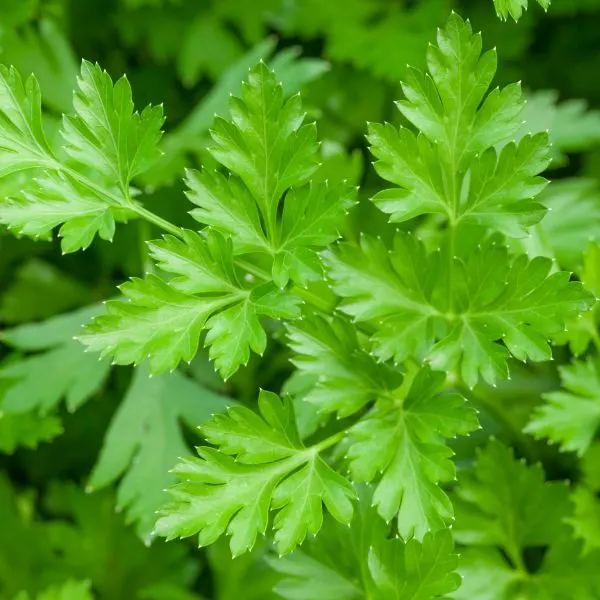
- Botanical name: Coriandrum sativum
- Sun Requirements: 4-6 hours of full sun per day
- Soil Type: Well-drained soil, pH 6.2-6.8, rich in organic matter
Did you realize that merging Cilantro and Asparagus could produce a synergistic connection that can engender a flourishing and hale garden?
With its fascinating and delicate features and redolent scent, Cilantro can allure a myriad of advantageous insects, such as parasitic wasps, hoverflies, and lacewings. These insects can assist in regulating pest populations and deliver a rich source of nectar for pollinators like bees and butterflies. And that’s not all! Cilantro can also work as a potent repellent against pests like spider mites and aphids, ensuring that your garden stays unharmed and free from pests.
But hold on; there’s more! With its robust and towering stature, Asparagus can provide the ideal prop for cilantro plants as they grow and become top-heavy. Asparagus can further contribute to soil improvement by providing a constant supply of organic matter as it flourishes.
By cultivating Cilantro and Asparagus together, you can fashion a melodious and mutually beneficial affiliation that can control pests, attract beneficial insects, offer support, and improve soil quality. Why not try it out and observe the wonder unfold in your garden?
3. Comfrey

- Botanical name: Symphytum officinale
- Sun Requirements: Partial shade to full sun
- Soil Type: Moist, well-drained soil, pH 6.0-7.0, rich in organic matter
Comfrey is a plant that can prove to be an excellent companion for Asparagus, owing to its profound roots that can assist in breaking up compacted soil, furnishing an environment that is conducive to the growth and proliferation of asparagus roots. Moreover, comfrey leaves are teeming with crucial nutrients like potassium, nitrogen, and phosphorus, which can foster soil enrichment and dispense vital nutrients to the Asparagus.
Comfrey can further serve as an enticement to advantageous insects like bees and butterflies, thus aiding in pollinating the Asparagus and boosting its yield. Additionally, comfrey can serve to shade the soil and hinder weed growth, which can conserve moisture and nutrients for the Asparagus.
Altogether, planting comfrey and Asparagus together can cultivate a mutually advantageous affiliation where comfrey can augment soil quality, provide crucial nutrients, and entice beneficial insects, while Asparagus can prosper from the improved soil conditions and intensified pollination. This way, you can escalate your gardening skills and discover the wonders of a thriving garden!
4. Dill

- Botanical name: Anethum graveolens
- Sun Requirements: Full sun
- Soil Type: Well-drained soil, pH 5.5-6.5, rich in organic matter
The partnership between dill and Asparagus in gardening is a fascinating example of the complexity and interdependence of different plant species. Dill attracts beneficial insects and repels pests, while Asparagus provides support for dill plants and improves soil quality. This relationship is bursting with unexpected benefits and intricate intricacies that highlight the complexity and diversity of the natural world.
5. Oregano
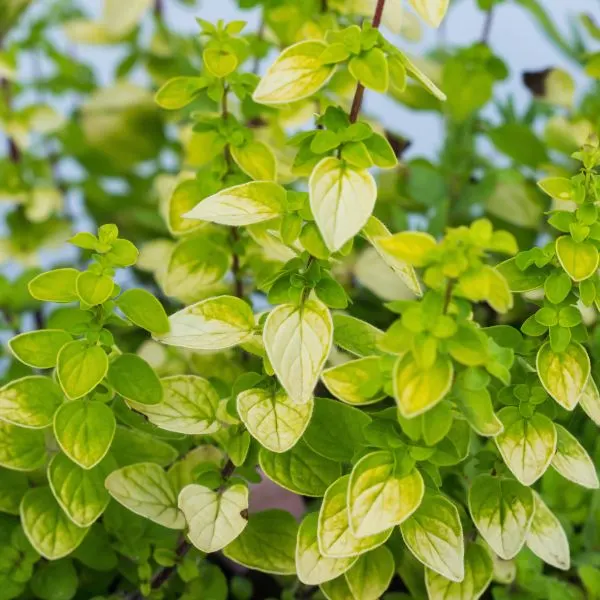
- Botanical name: Origanum vulgare
- Sun Requirements: Full sun
- Soil Type: Well-drained soil, pH 6.0-8.0, rich in organic matter
Oregano has the ability to repel pests while attracting beneficial insects, which can facilitate the pollination of Asparagus. Asparagus, on the other hand, provides a sturdy support structure for the oregano plants to grow and improves soil quality by producing organic matter.
The two plants have similar water and sunlight requirements, making them suitable planting partners. Planting oregano and Asparagus together can create a mutually beneficial relationship where oregano can ward off pests and attract advantageous insects, while Asparagus provides support and enhances soil quality.
6. Parsley
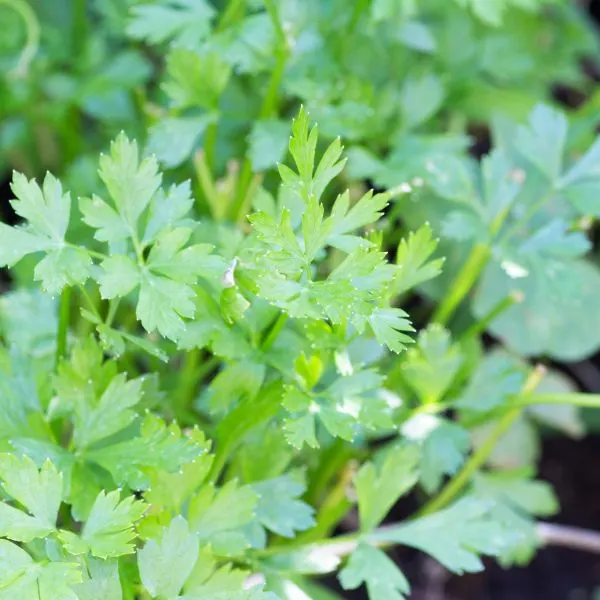
- Botanical name: Petroselinum crispum
- Sun Requirements: Full sun to partial shade
- Soil Type: Well-drained soil, pH 6.0-7.0, rich in organic matter
Parsley can attract beneficial insects that control pest populations and provide food for butterflies, while Asparagus can offer a sturdy support structure for parsley plants and improve soil quality.
The two plants also have similar water and sun requirements, making them compatible planting partners that can prevent weed growth and create a mutually beneficial relationship.
The intricacies of this partnership are both perplexing and bursting with benefits, showcasing the complex interdependence of different plant species.
7. Sage
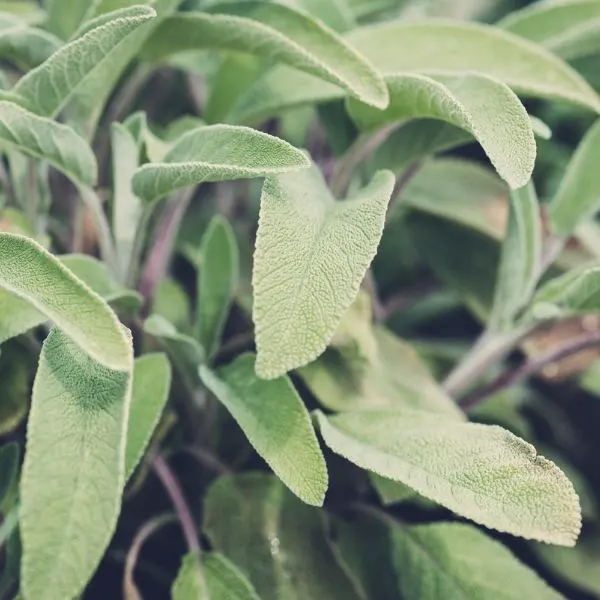
- Botanical name: Salvia officinalis
- Sun Requirements: Full sun
- Soil Type: Well-drained soil, pH 6.0-7.0, rich in organic matter
A most advantageous partnership can be found in the garden with the combination of sage and Asparagus. With its intense fragrance, Sage serves as a formidable defense against pernicious pests like the carrot fly and the cabbage moth, both of which threaten Asparagus.
Meanwhile, sage beckons bees and butterflies to the asparagus patch, ensuring proper pollination. Furthermore, Asparagus plays the role of a sturdy crutch for a sage to lean on while also contributing to the enrichment of the soil as it burgeons.
The pairing of these plants is felicitous due to their comparable needs for water and light, making them congenial planting companions. Not only that, but sage also aids in suppressing weed growth, which can stifle the growth of Asparagus by competing for nutrients and water.
In essence, cultivating sage and Asparagus together creates a symbiotic relationship where both plants mutually benefit from the arrangement. Asparagus provides support and soil improvement, while sage fortifies against harmful pests and summons helpful insects. The result? Two unique plants were growing side by side, both yielding their own bountiful rewards.
By intertwining the growth of sage and Asparagus in your garden, you will enjoy a verdant landscape of two plants with similar requirements and reciprocal advantages.
8. Thyme
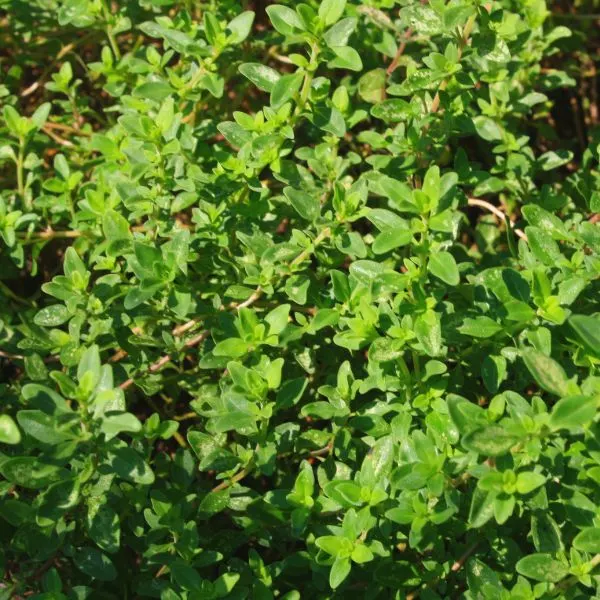
- Botanical name: Thymus vulgaris
- Sun Requirements: Full sun
- Soil Type: Well-drained soil, pH 6.0-8.0, rich in organic matter
Thyme can enhance the growth of Asparagus by attracting pollinators and repelling pests. Conversely, asparagus can provide a support structure for thyme and enrich the soil quality.
Thyme and Asparagus have comparable requirements for sunlight and water; planting them together can also prevent weed growth. This mutually beneficial partnership can yield a rich yield of herbs and vegetables, making it a worthwhile venture for any gardener.
Fruits & Vegetables
9. Beans
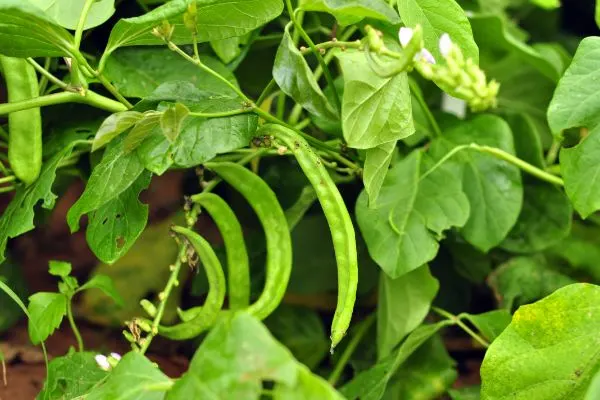
- Botanical name: Phaseolus vulgaris
- Sun Requirements: Full sun
- Soil Type: Well-drained soil, pH 6.0-7.5, rich in organic matter
Beans and Asparagus make for great garden companions. Beans are nitrogen-fixing plants, which is beneficial for Asparagus as they require a lot of nitrogen to grow properly. Additionally, beans can offer shade to Asparagus during hot summer months and help suppress weed growth.
Both beans and Asparagus have comparable water and sun requirements, making them ideal planting partners. Planting them together can increase overall yield and optimize garden space.
Ultimately, planting beans and Asparagus together creates a symbiotic relationship where each plant can provide important benefits to the other.
10. Beets
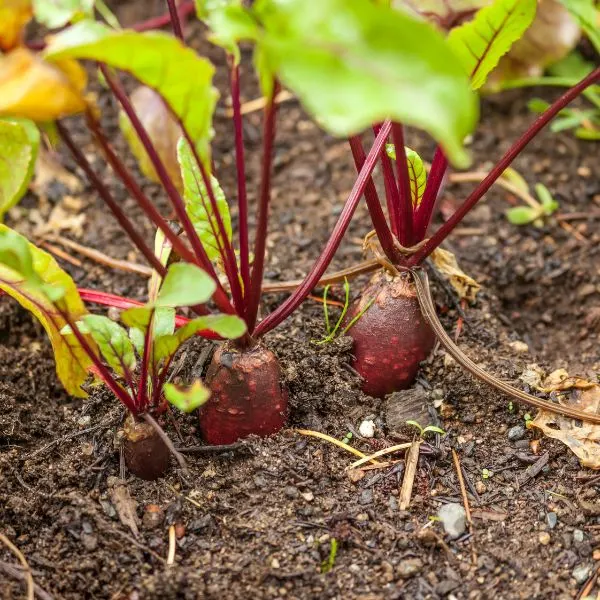
- Botanical name: Beta vulgaris
- Sun Requirements: Full sun to partial shade
- Soil Type: Well-drained soil, pH 6.0-7.5, rich in organic matter
Beets and Asparagus can be great companions in the garden. Beets can break up compacted soil, while Asparagus provides a support structure. Asparagus can also suppress weed growth and provide shade for the beet plants during the hot summer months.
Planting beets and Asparagus together can maximize garden space and increase overall yield. Both have similar sun and water requirements, making them compatible planting partners. In summary, planting beets and Asparagus together can create a mutually beneficial relationship where both plants can benefit from each other.
11. Eggplant
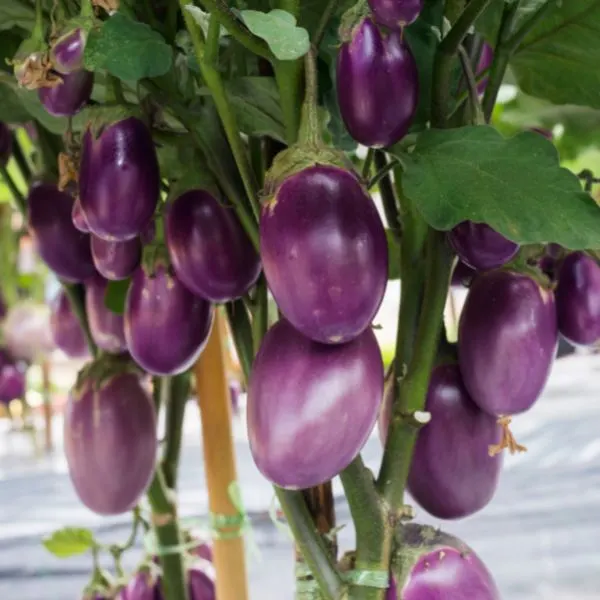
- Botanical name: Solanum melongena
- Sun Requirements: Full sun
- Soil Type: Well-drained soil, pH 5.5-6.8, rich in organic matter
Eggplant and Asparagus are complementary companion plants that can be grown together without competing for nutrients and water. Eggplant can help to deter pests and insects that may harm Asparagus and enhance the nutritional value of the overall yield.
Eggplant also contains compounds that act as natural insecticides, protecting asparagus plants from damage and increasing their yield. Consuming eggplant and Asparagus can provide several health benefits, from supporting heart health and digestion to promoting healthy skin and immune function. However, both plants should be given proper care and space for optimal growth.
12. Lettuce
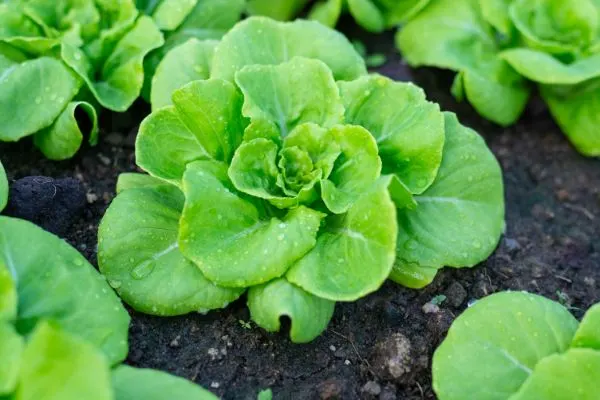
- Botanical name: Lactuca sativa
- Sun Requirements: Partial shade to full sun
- Soil Type: Well-drained soil, pH 6.0-7.0, rich in organic matter
Lettuce is a compatible companion for Asparagus due to several benefits. Firstly, lettuce’s shallow roots do not compete with the deep-rooted Asparagus for nutrients, and it provides a ground cover that helps to prevent weed growth and soil erosion.
Secondly, lettuce attracts beneficial insects like ladybugs, lacewings, and parasitic wasps that feed on pests that may attack Asparagus. Finally, lettuce keeps the soil moist and cool, which is favorable for Asparagus growth.
13. Peppers
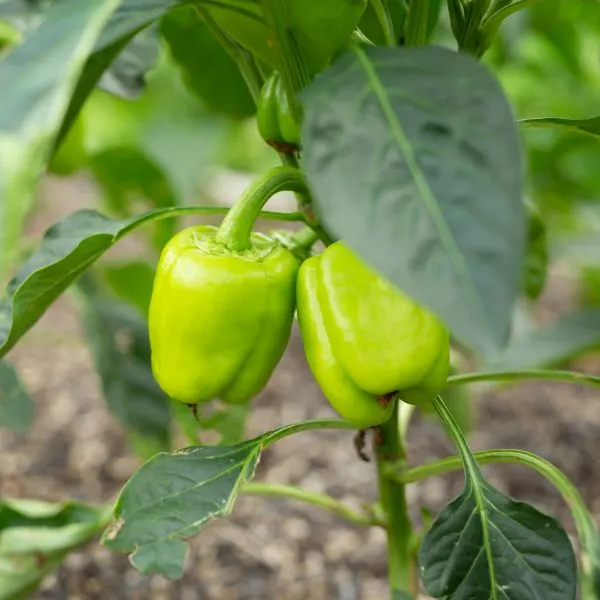
- Botanical name: Capsicum annuum
- Sun Requirements: Full sun
- Soil Type: Well-drained soil, pH 6.0-6.8, rich in organic matter
Peppers can serve as excellent companion plants for Asparagus for multiple reasons. Firstly, peppers help to repel pests such as aphids, spider mites, and whiteflies that can damage Asparagus.
Secondly, peppers have deep roots that break up compacted soil, improving soil structure, which is beneficial for Asparagus. Additionally, peppers produce capsaicin, which helps to deter pests like rodents and deer from eating Asparagus.
14. Rhubarb

- Botanical name: Rheum rhabarbarum
- Sun Requirements: Full sun to partial shade
- Soil Type: Well-drained soil, pH 5.5-6.8, rich in organic matter
Rhubarb is another compatible companion plant for Asparagus due to its similar growth habit and preference for comparable soil conditions.
Rhubarb helps repel pests such as Japanese beetles and aphids that could harm Asparagus. Rhubarb leaves can be chopped and used as natural mulch, which helps to conserve soil moisture and suppress weed growth around Asparagus.
15. Spinach

- Botanical name: Spinacia oleracea
- Sun Requirements: Partial shade to full sun
- Soil Type: Well-drained soil, pH 6.0-7.0, rich in organic matter
Spinach is a great companion plant for Asparagus due to its shade provision, which keeps the soil cool and moist. Spinach has shallow roots that don’t compete with Asparagus for nutrients, making it an ideal ground cover.
Spinach also attracts beneficial insects such as ladybugs, lacewings, and parasitic wasps that feed on pests that may harm Asparagus. Spinach is a good source of nitrogen, which is essential for Asparagus growth.
16. Strawberries
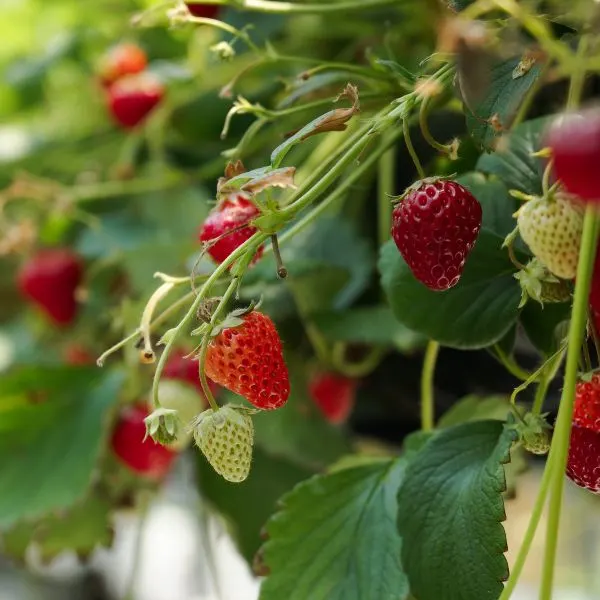
- Botanical name: Fragaria ananassa
- Sun Requirements: Full sun to partial shade
- Soil Type: Well-drained soil, pH 5.5-6.5, rich in organic matter
Strawberries, when planted next to Asparagus, provide various benefits, such as serving as a natural mulch that helps to retain moisture and reduce weed growth around the Asparagus plants. Strawberries also protect the soil from erosion and improve soil quality through their root systems.
Moreover, planting strawberries and Asparagus together attracts pollinators such as bees, which are essential for both plants’ successful growth and reproduction. Finally, strawberries and Asparagus complement each other nutritionally, providing several health benefits, including supporting immune function and heart health and promoting healthy digestion.
17. Tomatoes
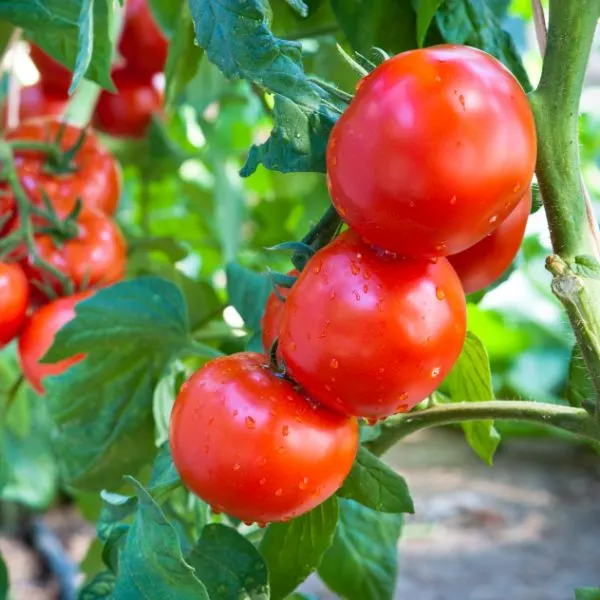
- Botanical name: Solanum lycopersicum
- Sun Requirements: Full sun
- Soil Type: Well-drained soil.
You wouldn’t think it, but tomatoes and Asparagus make fantastic garden companions. The two crops have a surprising number of benefits when planted together. For starters, tomatoes are excellent at repelling asparagus beetles, which can be a real nuisance for asparagus growers. But that’s not all – by planting tomatoes and asparagus side by side, you can actually improve the soil quality.
Asparagus needs a lot of nutrients to grow, and tomatoes prefer soil that drains well. By combining these two crops, you can create a soil environment that works for both plants.
And here’s the kicker – Asparagus is a nitrogen-fixing plant, which means it can take nitrogen from the air and turn it into a form that other plants can use. This nitrogen can then benefit the tomatoes, which are heavy nitrogen feeders.
And if you’re short on space in your garden, planting tomatoes next to Asparagus can be a great way to maximize your growing area while still getting a good yield. Asparagus and tomatoes make an excellent pair as they work together to improve soil health, ward off pests and diseases, and enhance flavor.
Asparagus is a natural soil cleanser, pulling out harmful toxins from the ground. Meanwhile, tomatoes are heavy feeders that require ample amounts of nutrients to thrive.
When planted together, the asparagus’ detoxifying properties help create a nutrient-rich environment that provides a healthy foundation for the tomatoes to grow. Additionally, tomato plants’ dense foliage acts as a natural shade for Asparagus, preventing it from getting scorched in the summer heat.
The benefits of companion planting between Asparagus and tomatoes continue beyond there. The two plants also ward off pests and diseases. Asparagus has an amino acid that repels nematodes, a common tomato pest that damages roots, while the tomato plant releases solanine, a natural insect repellent that keeps aphids, whiteflies, and hornworms at bay.
Furthermore, planting the two together enhances the taste of both crops. Tomatoes have an acidic flavor that pairs well with asparagus’ earthy taste, resulting in a delicious and nutritious harvest.
18. Grapes
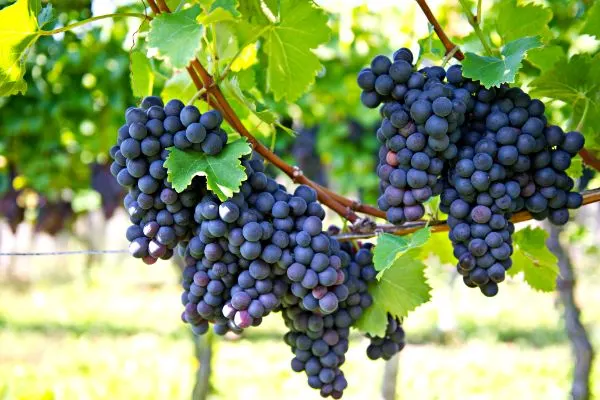
- Botanical name: Vitis vinifera
- Sun Requirements: Full sun, at least 6-8 hours of direct sunlight per day
- Soil Type: Well-draining soil, pH between 5.5-7.0, rich in organic matter
When it comes to Asparagus and grapes, this pairing offers several benefits, including improved soil health, natural pest control, and higher crop yields.
Asparagus is a natural soil cleanser, drawing out toxins and impurities from the ground. Grapes, on the other hand, require well-draining soil with a healthy pH balance to thrive.
When planted together, Asparagus helps purify the soil while also breaking up compacted soil, allowing water and air to circulate better, creating a healthy environment for grape vines to take root. In turn, grapevines help stabilize the soil and prevent erosion, creating a mutually beneficial relationship.
Companion planting between Asparagus and grapes also offers natural pest control. Asparagus secretes a substance that repels beetles and other insects that can damage grapevines, while grapes release compounds that deter birds from eating asparagus shoots.
This synergy helps reduce the need for pesticides and harmful chemicals, making it an eco-friendly and sustainable practice. Furthermore, planting the two crops together can lead to higher crop yields, as the different root systems help prevent nutrient depletion and competition for resources. Overall, companion planting of Asparagus and grapes is a winning combination for any garden or farm.
Flowering Ornamentals
19. Asters

- Botanical name: Asteraceae family
- Sun Requirements: Full sun to partial shade
- Soil Type: Well-draining soil, with average to fertile soil
When it comes to Asparagus and asters, this pairing offers several benefits, including improved soil health, natural pest control, and increased biodiversity.
Asparagus is a heavy feeder that requires nutrient-rich soil to thrive. Asters, on the other hand, are nitrogen-fixing plants that help enrich the soil by converting atmospheric nitrogen into a form that is available to other plants. This symbiotic relationship leads to healthier asparagus plants with stronger stems and more extensive root systems, making them even more resistant to pests and diseases.
Companion planting between Asparagus and asters also offers natural pest control. Asters attract beneficial insects such as ladybugs and lacewings, which prey on aphids and other pests that can damage Asparagus. In turn, asparagus’ tall, fern-like foliage provides a natural habitat for these insects, creating a balanced ecosystem that reduces the need for harmful pesticides and chemicals.
Furthermore, planting Asparagus and asters together increases biodiversity in the garden, which can lead to a more robust and resilient ecosystem. A diverse garden is more resistant to disease and pests, as it creates a habitat for a variety of beneficial insects and microorganisms.
Additionally, asters add a beautiful splash of color to the garden, making it not only functional but also aesthetically pleasing. In summary, companion planting Asparagus and asters is a win-win for any gardener or farmer looking to improve the health and productivity of their crops.
20. Marigold

- Botanical name: Tagetes species
- Sun Requirements: Full sun to partial shade
- Soil Type: Well-draining soil, with average to fertile soil
Companion planting is an age-old agricultural technique that has stood the test of time, and for a good reason. The benefits of planting different crops together are numerous, and when it comes to Asparagus and marigold, the advantages are bountiful.
Marigolds are not just pretty flowers; they are also powerful pest repellents. Planting them alongside Asparagus can significantly reduce pest infestations that can otherwise wreak havoc on your crop. This is because marigolds emit a scent that repels many pests, such as nematodes and whiteflies.
But that’s not all. The marigold’s root system has also been shown to produce a substance that deters harmful nematodes in the soil, making it an ideal companion for Asparagus, which can be susceptible to nematode infestations.
Furthermore, Asparagus and marigold have different root systems that complement each other, with the former having deep roots that reach far into the soil and the latter having shallow roots that spread out close to the surface. This means that they don’t compete for the same nutrients and can both thrive in the same patch of soil.
In addition to their pest-repelling and nutrient-enhancing properties, planting Asparagus and marigold together can also promote the overall health and durability of your garden or farm. Asparagus can be prone to disease and is a heavy feeder, meaning it needs a lot of nutrients to grow properly.
Marigolds, on the other hand, are relatively low-maintenance and can help to improve the soil’s structure and fertility, making it a fertile environment for Asparagus to thrive. All in all, planting these two crops together is a no-brainer for American gardeners and backyard farmers looking to boost their yields and promote healthy growth.
21. Nasturtiums
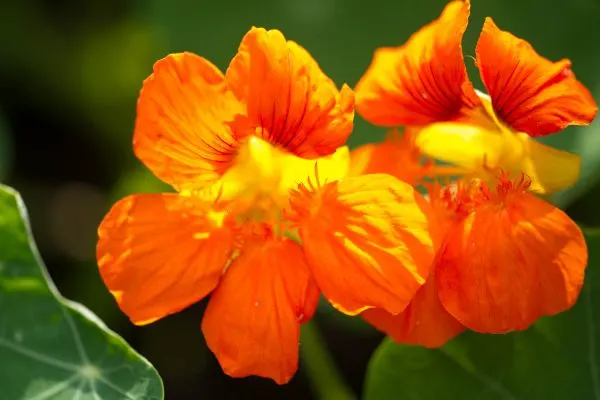
- Botanical name: Tropaeolum species
- Sun Requirements: Full sun to partial shade
- Soil Type: Well-draining soil with average soil fertility
Companion planting is a powerful tool for any gardener or farmer, but the dynamic duo of Asparagus and nasturtiums takes it to another level entirely.
Beyond the expected benefits of enhancing soil fertility and reducing pests, planting these two crops together can also boost the health of nearby plants by repelling harmful insects and attracting beneficial ones.
The unique combination of Asparagus and nasturtiums also creates a stunning visual display that can add a touch of beauty to any garden or farm. But the benefits don’t stop there – the deep root system of nasturtiums can also help to prevent erosion and retain the moisture in the soil, reducing water usage and creating a more sustainable growing environment.
Whether you’re a seasoned gardener or just starting out, the unexpected advantages of companion planting Asparagus and nasturtiums are sure to impress and inspire. So why try this dynamic duo in your own garden or farm and experience the benefits firsthand?
22. Petunias

- Botanical name: Petunia hybrida
- Sun Requirements: Full sun to partial shade
- Soil Type: Well-draining soil with average soil fertility
Companion planting is a powerful and often surprising technique for enhancing the health and productivity of your garden or farm, and the combination of Asparagus and petunias is a prime example of this.
At the same time, it may seem like an unlikely pairing, but planting these two crops together can offer a range of benefits that go beyond the expected. For starters, petunias act as a natural insect repellent, helping to keep harmful pests at bay and promoting a healthier growing environment.
But the benefits don’t stop there – the deep roots of petunias can also help to loosen the soil, making it easier for asparagus roots to penetrate and absorb nutrients.
Additionally, the bright and colorful blooms of petunias can add a touch of vibrancy and beauty to your garden or farm, creating a more enjoyable and inviting growing space.
With the surprising advantages of companion planting Asparagus and petunias, you’ll not only reap a bountiful harvest but also enjoy a more visually appealing and sustainable growing environment.
23. Zinnias
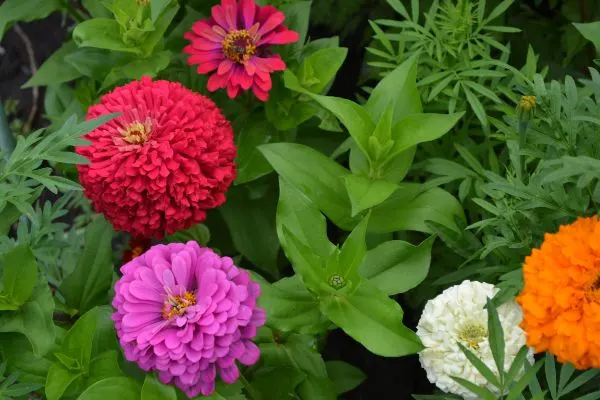
- Botanical name: Zinnia species
- Sun Requirements: Full sun
- Soil Type: Well-draining soil, pH between 5.5-7.5, with average soil fertility
If you’re looking to take your gardening game to the next level, consider the surprising benefits of companion planting Asparagus and zinnias. These two plants may seem like an unlikely pairing, but when planted together, they can offer a range of benefits that go beyond the expected.
For starters, zinnias attract pollinators such as bees and butterflies, which can help to boost the yield of nearby asparagus plants. In addition, the colorful and showy blooms of zinnias can add a touch of visual interest and beauty to your garden or farm, creating a more inviting and enjoyable growing space.
But the benefits don’t stop there – the deep roots of zinnias can also help to improve soil structure and water retention, making it easier for asparagus roots to absorb nutrients and grow strong and healthy.
Whether you’re a seasoned gardener or just starting out, the unexpected advantages of companion planting Asparagus and zinnias are sure to impress and inspire.
Bad Companion Plants For Asparagus
1. Alliums
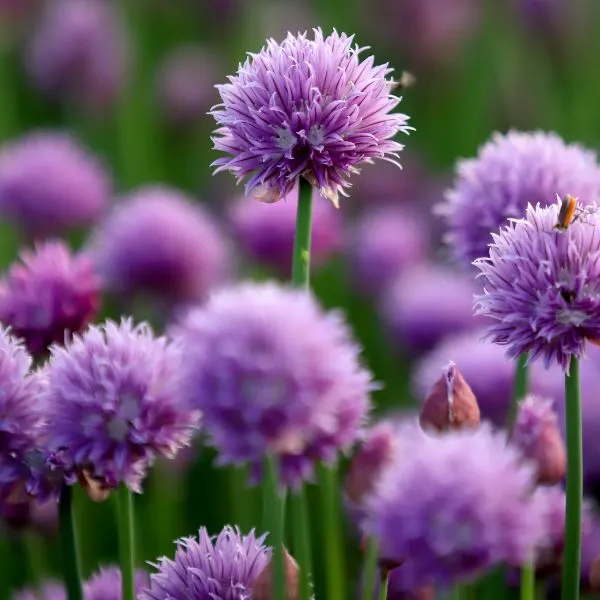
Alliums, such as garlic and onions, could be better Asparagus companion plants since they can impede its development. Alliums produce chemicals that can suppress the development of other plants, including Asparagus. Moreover, Asparagus beetles are drawn to the aroma of Alliums, which might contribute to an increase in pest problems.
2. Carrots

Carrots are not ideal Asparagus companion plants because they compete for resources. Carrots’ extensive taproots can consume soil minerals, leaving Asparagus with insufficient resources to develop. Furthermore, because Asparagus and carrots are both susceptible to the same pests and diseases, growing them together might result in greater issues.
3. Potatoes
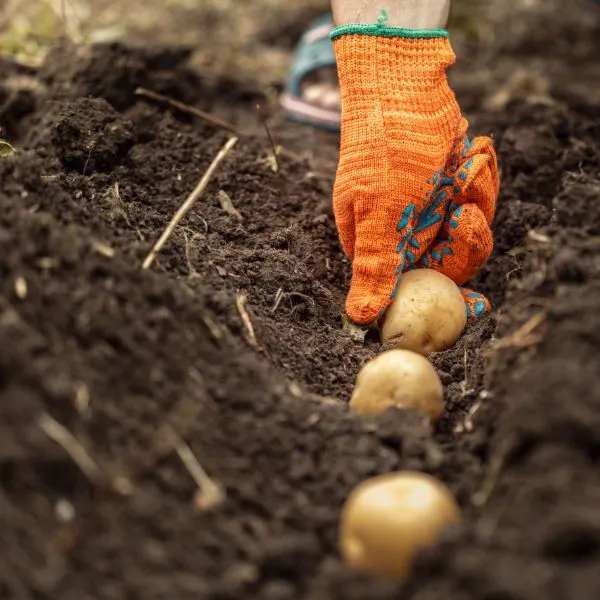
Potatoes are not ideal companion plants for Asparagus because they attract pests and illnesses that might damage the plant. Because potatoes and Asparagus are both susceptible to illnesses like Fusarium wilt and Verticillium wilt, growing them together can increase the probability of these diseases occurring. Also, potatoes might compete for nutrients with Asparagus, resulting in lower yields.
4. Fennel
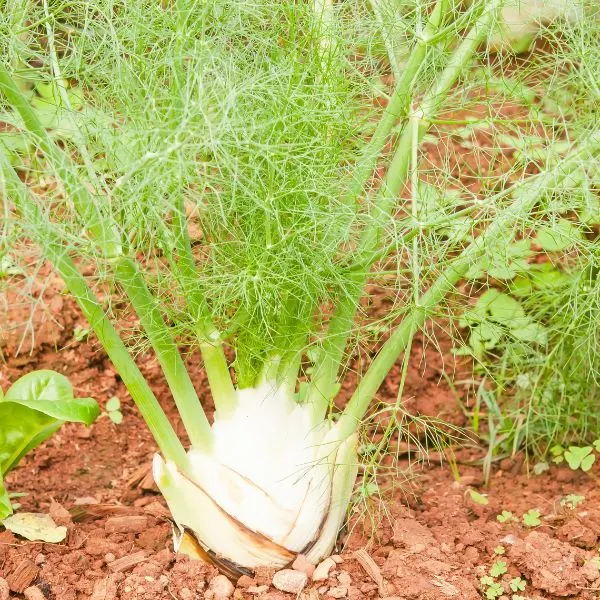
Fennel is a poor companion plant for Asparagus because it inhibits development. Compounds in fennel can impede the development of other plants, including Asparagus. Also, fennel attracts pests like aphids and spider mites, which can destroy Asparagus.
FAQs
What can I put on my asparagus bed?
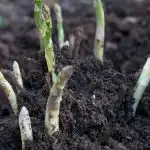
For 100 square feet, 1 to 1.5 pounds of all-purpose garden fertilizer, like 10-10-10, should be used. After the last harvest in June, asparagus can also be fertilized.
What is the best manure for Asparagus?
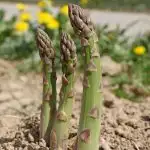
Cow manure will do, but sheep manure has more nitrogen and nutrients. And consider the source: Sheep are prettier than cows and make more demure manure. The delicate lime-covered ferns of Asparagus make an attractive backdrop, so consider edging the garden with it.
How often should Asparagus be fertilized?

Generally, it is only necessary to apply fertilizer for an established asparagus crop after harvest. In fact, delaying fertilization until after harvest can reduce early weed growth. For sandy coarse-textured soils, however, 20-25 lbs N/acre in the spring may be beneficial for spear development.
How do you make Asparagus grow thicker?

Side-dressing the garden bed with about an inch of compost each season does the trick. Once the spears begin to emerge, I also like to apply a thick mulch to build nutrients over time while also helping to retain moisture in the soil.
How many times can you harvest Asparagus?

.You could collect 7- to 9-inch spears every two to four days in the early part of the season. The frequency of harvesting will increase to once or twice a day as the air temperature rises. Up to 24 harvests are permitted each season, after which you can let the crowns fern and spread out.
How do you encourage Asparagus to spread?

Plant the crowns 12 to 18 inches apart because asparagus requires room to grow. In the first few years, they won’t spread out much, but once they’re established, they’ll swiftly fill in. Because they have both male and female plants, which means they will generate seeds and self-sow, heirloom types require more area.
Does Asparagus like wet soil?

A variety of soil types may be used to grow asparagus. Its roots can tolerate damp and acidic substrates better than the roots of the majority of fragile vegetables. While its mature crowns can readily handle brief exposure to excessive wetness, it is unlikely to live in chronically damp environments.
Wrapping up
Asparagus is a tasty and healthy addition to any garden or farm, but it, like all crops, needs adequate care and attention to grow. Being a perennial crop, Asparagus takes more planning and care than annuals, but the rewards may be well worth the effort. In this article, we looked at several ideal asparagus companion plants that may help improve soil health, discourage pests, and boost flavor, as well as certain plants to avoid.
The key to producing Asparagus is to give the proper growth conditions. To grow robust and healthy, Asparagus loves well-drained soil with lots of organic matter and full light. It’s also critical to maintaining the soil equally wet, particularly in the first few years of development.
While Asparagus does not require much fertilizer, it might benefit from a little application of compost or well-rotted manure in early spring.
Naturally, Asparagus is susceptible to pests and illnesses. Common pests and diseases that can affect Asparagus include beetles, aphids, and rust. To help prevent these issues, consider companion planting with herbs like dill, parsley, or thyme, which repel pests while attracting beneficial insects.
To avoid pests and illness, keep the area surrounding your asparagus patch clean and clear of debris. You may enjoy a plentiful harvest of excellent Asparagus for years to come with a little care and attention.
More plant stuff
